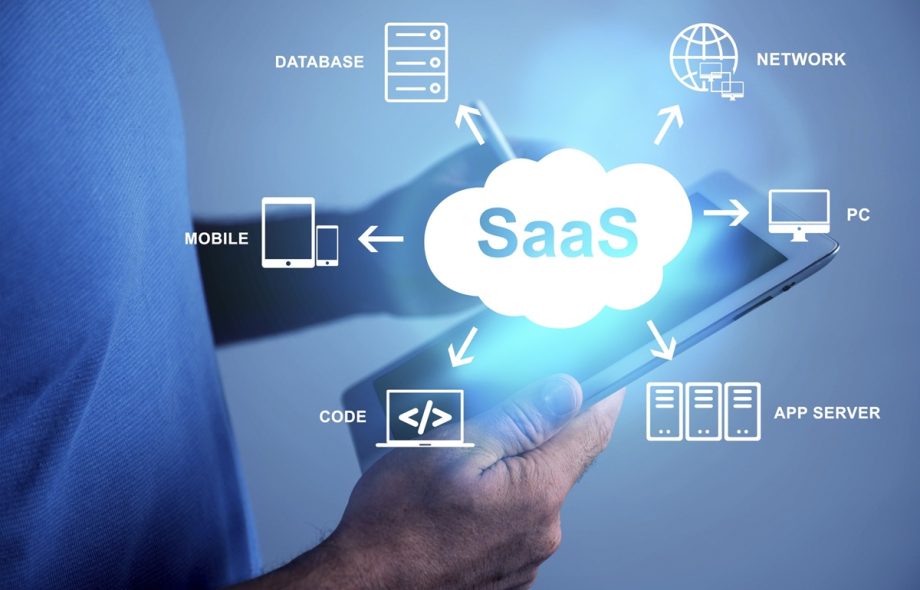Software as a Service (SaaS) has revolutionized the software development industry, offering businesses and consumers cloud-based applications accessible via the internet. This shift from traditional software installation to web-based solutions has led to the rise of SaaS-based software development, providing scalability, cost-effectiveness, and seamless updates. This article delves into the intricacies of SaaS-based software development, covering its benefits, architecture, challenges, and best practices.
Understanding SaaS-Based Software Development
What is SaaS?
SaaS is a software delivery model where applications are hosted on cloud infrastructure and accessed through web browsers. Users do not need to install or maintain software on their local devices; instead, they subscribe to services on a pay-as-you-go basis.
Key Characteristics of SaaS Applications
• Cloud-Based Hosting – Applications are hosted on remote servers.
• Subscription-Based Model – Users pay for usage instead of purchasing licenses.
• Automatic Updates – The service provider manages updates and maintenance.
• Multi-Tenancy Architecture – A single application instance serves multiple customers.
• Scalability & Flexibility – Easily scalable to meet demand changes.
• Accessibility – Available of Saas on multiple devices and platforms.
Benefits of SaaS-Based Software Development
1. Cost Efficiency
SaaS eliminates upfront costs associated with software licenses, hardware, and infrastructure. Businesses only pay for the features and usage they require, reducing overall expenses.
2. Scalability & Performance
Cloud-based infrastructure allows for dynamic resource allocation, ensuring that SaaS applications scale based on user demand without compromising performance.
3. Faster Deployment
Unlike traditional software, which requires installation and configuration, SaaS applications can be deployed instantly, significantly reducing time-to-market.
4. Security & Compliance
Leading SaaS providers implement advanced security protocols, encryption, and compliance with industry standards (e.g., GDPR, HIPAA, SOC 2), ensuring data safety.
5. Automatic Updates & Maintenance
SaaS providers handle software updates, bug fixes, and security patches without disrupting users, improving reliability and user experience.
6. Accessibility & Collaboration
Users can access SaaS applications from any device with an internet connection, facilitating remote work and team collaboration.
SaaS Architecture & Development Frameworks
1. Multi-Tenancy Model
SaaS applications follow a multi-tenant architecture where a single instance serves multiple customers. This model optimizes resource usage and simplifies maintenance.
2. Microservices Architecture
Breaking down applications into smaller, independent services allows for better scalability, flexibility, and easier deployment.
3. API-Driven Development
SaaS solutions leverage APIs (REST, GraphQL) to facilitate integration with third-party services, enhancing functionality and connectivity.
4. Database Management
SaaS applications use relational (PostgreSQL, MySQL) and NoSQL (MongoDB, Firebase) databases, often implementing sharding and replication techniques for scalability.
5. Front-End & Back-End Technologies
• Front-End: React.js, Angular, Vue.js for interactive user interfaces.
• Back-End: Node.js, Django, Ruby on Rails for server-side logic and API handling.
• Cloud Platforms: AWS, Azure, Google Cloud for hosting and infrastructure management.
SaaS Development Lifecycle
1. Market Research & Planning
• Identifying target audience and business needs.
• Conducting competitor analysis.
• Defining the product roadmap and pricing model.
2. Choosing the Tech Stack
Selecting suitable technologies based on scalability, security, and integration capabilities.
3. Designing the Architecture
• Defining multi-tenancy vs. single-tenancy approach.
• Database schema design.
• API planning and third-party integrations.
4. Development & Implementation
• Building the front-end and back-end components.
• Implementing authentication and authorization (OAuth, JWT).
• Setting up CI/CD pipelines of Saas system for continuous deployment.
5. Testing & Security
• Automated and manual testing (unit, integration, performance testing).
• Implementing security best practices (SSL/TLS, data encryption).
6. Deployment & Monitoring
• Hosting on cloud platforms with auto-scaling capabilities.
• Using monitoring tools (Datadog, New Relic) for performance tracking.
• Logging errors and user feedback analysis for improvements.
7. Maintenance & Updates
• Regular bug fixes and feature enhancements.
• User feedback incorporation.
Security patches and compliance updates.
Challenges in SaaS Development & How to Overcome Them
1. Data Security & Privacy
• Implementing robust encryption for Saas and access control measures.
• Complying with data protection regulations.
2. High Availability & Downtime
• Using load balancers and auto-scaling.
• Implementing failover strategies and redundancy.
3. Integration with Legacy Systems
• Providing well-documented APIs for seamless third-party integration.
• Using middleware solutions for compatibility.
4. Customization & Scalability
• Offering modular features for flexible user configurations.
• Using microservices to enable independent scaling of components.
5. User Experience & Performance
• Optimizing front-end load times using caching (CDN, Redis).
• Conducting A/B testing for UI improvements.
Future Trends in SaaS-Based Software Development
1. AI & Machine Learning Integration
AI-driven analytics, chatbots, and automation will enhance SaaS capabilities, offering personalized user experiences.
2. Edge Computing for Performance Optimization
Edge computing will reduce latency and enhance SaaS performance by processing data closer to users.
3. No-Code & Low-Code Platforms
These platforms will empower non-developers to build and customize SaaS applications without extensive coding knowledge.
4. Blockchain for Security & Transparency
Decentralized blockchain solutions will improve data security, identity verification, and compliance in SaaS applications.
5. Vertical SaaS Solutions
Industry-specific SaaS (healthcare, finance, legal) will see increased adoption due to tailored features and compliance adherence.
Conclusion
SaaS-based software development has transformed the way businesses deploy and manage software solutions. With its scalability, cost-effectiveness, and accessibility, SaaS continues to be the preferred model for modern applications. However, developers must address security, integration, and performance challenges while leveraging emerging trends to stay competitive. By following best practices and adopting the latest technologies, businesses can build successful SaaS applications that deliver value to users and drive growth in the digital age.
 :
https://max.services/
:
https://max.services/












